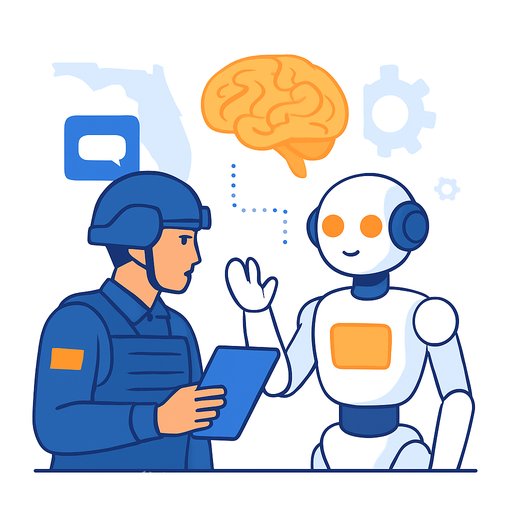How AI Agents Are Driving the Next Phase in Telecom Operations
Telecom carriers have long operated under intense pressure to maintain network reliability, scalability, and security. Yet today's environment brings new challenges. Infrastructure spending is rising but revenue growth is slower than expected, forcing carriers to run daily operations more efficiently while preparing for future demands.
Compounding these pressures is a looming talent shortage. Key roles in network architecture, data analytics, and operational support systems are at risk as many experienced workers approach retirement. For instance, the Fiber Broadband Association reports that about 60% of fiber technicians will retire soon. This means critical operational knowledge risks being lost unless carriers actively capture and transfer it.
Much of this expertise currently exists only in employees’ heads. When they leave, the know-how disappears with them—leaving fragmented data and limited automation behind. This traps carriers in costly, reactive cycles that slow down modernization. AI agents are emerging as an essential tool to break this pattern.
What’s Holding Telecom Operations Back?
Three main issues slow telecom operations today:
- Lack of automation: Many carriers struggle with siloed systems and inconsistent documentation, limiting the effectiveness of automation tools.
- Skills gap: Experienced engineers retiring faster than new talent can replace them means a loss of deep operational insights.
- Fragmented, unreliable data: Automation depends on good data. Poor data quality leads to errors spreading faster rather than improving operations.
According to Gartner, 63% of organizations don't have or aren't sure about proper data management to support AI. They predict 60% of AI projects will fail by 2026 due to lack of AI-ready data. For telecoms investing in automation, this is a significant risk.
AI Agents Built for Real Telecom Challenges
Unlike traditional automation that requires structured, clean data, AI agents work with both structured and unstructured data. They reason through complex scenarios, analyze real-time information, and automate workflows across fragmented systems.
AI agents don’t replace humans but extend their capabilities. They scale expertise, automate repetitive tasks, and help apply consistent decision-making as networks grow more complex. For example, AI agents can detect anomalies instantly, suggest fixes based on best practices, and coordinate responses across teams and systems.
Practical Benefits in the Field
Consider network reliability during a storm. Older cable networks often suffer outages that take time to diagnose and repair. Without automation, this leads to slow fixes and frustrated customers.
With AI agents, a technician can get real-time help by combining visual data and backend system queries to find root causes faster. The agent can recommend proven solutions, coordinate with other operators sharing infrastructure, and reduce manual work. This speeds up repairs and improves customer satisfaction.
Clearing Up Common Misunderstandings
Some believe AI agents will instantly solve all operational problems. In reality, their success depends on solid data, consistent processes, documented best practices, and trained human partners. Many telecom environments still rely on scattered knowledge and informal workflows, making effective AI adoption difficult.
Preparing for AI means cleaning data, cataloging knowledge, and modernizing infrastructure first. AI agents need strong foundations: reliable data, clear system integration, and governance frameworks. Without these, agents may produce inaccurate results or take unintended actions.
Governance must define acceptable behaviors and ensure transparency. Logging and monitoring are critical for auditing actions and investigating issues. Moving AI agents from pilot to production requires thorough testing in real-world scenarios to ensure they meet business and compliance needs.
Looking Ahead: What an AI-Powered Telecom Future Means
Industry leaders see AI agents as a way to close talent gaps, reduce operational costs, and accelerate innovation. The focus is on deploying AI thoughtfully to get real impact.
In the future, AI agents will play a key role in designing, running, and optimizing networks. Consumers will receive connectivity services that adjust to their specific needs and usage. Enterprises will benefit from scalable network deployments for IoT, manufacturing, and environmental monitoring that depend on real-time data.
But it starts with a clear strategy. Carriers must define goals, identify challenges, and understand how AI fits into their operations. Jumping in without a plan risks wasted resources and minimal results.
Telecom remains essential to economic growth and digital progress. To stay relevant, carriers need to modernize their operations now and build foundations for the networks of tomorrow. AI agents aren’t a cure-all, but they are a necessary step toward efficient, reliable, and customer-focused telecom operations.
For those interested in learning more about AI applications in operations, Complete AI Training offers up-to-date courses and resources to help teams build AI skills and implement solutions effectively.
Your membership also unlocks:






